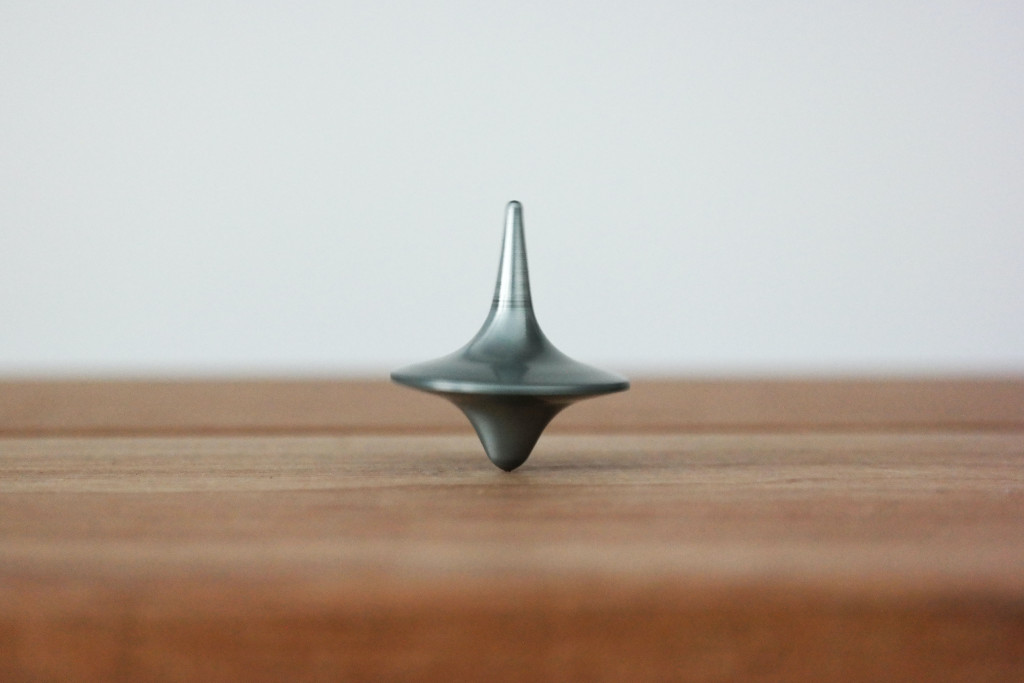In this article, you will discover the importance of balancing bench grinder wheels and how it can improve your grinding experience. When it comes to working with bench grinders, achieving balance is crucial to ensure smooth and efficient operation. Whether you’re a professional or a hobbyist, understanding the significance of balancing your grinder wheels will not only enhance the quality of your work but also extend the lifespan of your equipment. So, let’s explore the ins and outs of balancing bench grinder wheels and learn how to achieve optimal results effortlessly.

Why is Balancing Bench Grinder Wheels Important?
Balancing bench grinder wheels is an essential aspect of maintaining a smooth and safe grinding experience. The process of balancing helps to prevent excessive vibration, enhances safety, and improves the overall performance of the grinder.
Prevents excessive vibration
One of the primary reasons for balancing bench grinder wheels is to prevent excessive vibration. When a wheel is unbalanced, it can create a noticeable shaking or vibrating motion, which not only affects the quality of the grinding but also poses a safety risk. Excessive vibration can lead to inaccurate grinding, causing damage to the workpiece or even injuring the operator. By balancing the wheels, you can minimize vibration and promote a smoother grinding operation.
Enhances safety
Balancing bench grinder wheels is crucial for ensuring the safety of both the operator and the equipment. Unbalanced wheels can lead to unpredictable movements, causing the grinder to jump or jerk during operation. This not only makes it difficult to control the grinder but also increases the risk of accidents. Balancing the wheels reduces these erratic movements, making the grinder more stable and safer to use.
Improves grinder performance
Balanced bench grinder wheels significantly improve the performance of the grinder. When the wheels are correctly balanced, they rotate smoothly and evenly, allowing for accurate and consistent grinding. Grinding with balanced wheels ensures that the workpiece is evenly processed, resulting in better precision and a higher-quality finish.
Tools Needed for Balancing Bench Grinder Wheels
To balance bench grinder wheels effectively, you will need a few tools and equipment. Here are the essential items required for the balancing process:
Grinder wheel balancer
A grinder wheel balancer is a specialized tool designed explicitly for balancing bench grinder wheels. It typically consists of a base with adjustable supports and cones to hold the wheel securely in place during the balancing procedure. The balancer helps identify any inconsistencies in the wheel’s balance and guides adjustments to achieve optimal balance.
Balancing weights
Balancing weights are small, removable metal pieces used to correct the imbalance in the grinder wheel. These weights are added or removed strategically to eliminate any heavy or light spots on the wheel. They are available in various sizes and can be attached to the wheel using adhesive or clamps.
Safety equipment
When working with bench grinders or any power tools, it is crucial to prioritize safety. Therefore, in addition to the balancing tools, you should also have appropriate safety equipment. This includes safety goggles or a face shield to protect your eyes from flying debris, work gloves to safeguard your hands, and ear protection to minimize noise exposure.
Steps to Balancing Bench Grinder Wheels
Now that you have gathered the necessary tools and equipment, let’s walk through the step-by-step process of balancing bench grinder wheels:
Step 1: Inspect the grinder wheel
Begin by carefully inspecting the grinder wheel for any visible damage or signs of wear. Check for cracks, chips, or uneven edges, as these can affect the wheel’s balance. If you notice any significant damage, it is recommended to replace the wheel rather than attempting to balance it.
Step 2: Identify the heavy side
Next, identify the heavy side of the wheel. This can be done by resting the wheel horizontally on the grinder balancer and observing which side tilts downward. The heavy side is the area that consistently falls lower than the rest.
Step 3: Attach the wheel to the balancer
Securely attach the grinder wheel to the balancer, ensuring that it sits snugly in the supports or cones provided. Make sure the wheel is centered and properly aligned with the balancer to obtain accurate results.
Step 4: Adjusting the weights
Using the information gathered from Step 2, begin adjusting the weights to counterbalance the heavy side. Add the balancing weights to the light side of the wheel to even out the weight distribution. Start with small increments and reassess the balance after each adjustment. Continue this process until the wheel remains balanced horizontally on the balancer.
Step 5: Recheck the balance
After making the necessary adjustments to the weights, recheck the balance of the wheel. You can do this by rotating the wheel 90 degrees and observing if it maintains a horizontal position. If the wheel still tilts on any side, make further adjustments as needed until the balance is achieved.
Precautions to Take When Balancing Bench Grinder Wheels
While balancing bench grinder wheels is a relatively straightforward process, there are a few precautions you should take to ensure your safety and the effectiveness of the procedure:
Wear safety gear
Always wear appropriate safety gear when working with bench grinders, including eye protection, gloves, and earplugs or earmuffs. Safety goggles or a face shield will shield your eyes from any debris, while gloves will protect your hands from accidental contact with the wheel. Additionally, ear protection will safeguard your hearing from the noise generated by the grinder.
Ensure the grinder is powered off
Before starting the balancing process, make sure the bench grinder is powered off and unplugged. This will prevent any accidental activation of the grinder during the procedure, eliminating the risk of injury. It is essential to work on the wheels only when they are stationary.
Be gentle when adjusting weights
When adjusting the balancing weights, be gentle and take your time. Small, incremental adjustments are more effective and provide greater control over the balancing process. Rushing or applying excessive force can lead to incorrect adjustments, resulting in an imbalanced wheel.

Common Issues Encountered When Balancing Bench Grinder Wheels
While balancing bench grinder wheels is generally a smooth process, certain common issues may arise. Here are a few potential challenges you may encounter and possible solutions:
Out-of-round wheels
If you notice that the grinder wheel is not perfectly round, it may pose difficulties during balancing. In such cases, it is recommended to replace the wheel, as an out-of-round wheel cannot be effectively balanced. Grinding with an improperly balanced wheel can lead to vibration and poor performance.
Unbalanced wheels post-balancing
Sometimes, even after going through the balancing process, you may find that the wheels still appear unbalanced. This could be due to inaccurate adjustments or the presence of other factors influencing the balance, such as uneven wear or foreign debris on the wheel. In such instances, reassess the balance and make necessary adjustments to rectify the problem.
Inaccurate balancing
Achieving accurate balance can be challenging, especially if you are new to the process. It may take several attempts and fine-tuning to achieve optimal results. Patience and attention to detail are key. If you continue to struggle, you may consider seeking assistance from a professional or an experienced individual.
Excessive wheel wear
Balancing bench grinder wheels is not a one-time process. With regular use, the wheels may become unbalanced again due to wear and tear. Excessive wheel wear can lead to imbalances, affecting the grinding quality and safety. To prevent this, inspect the wheels regularly and address any balance issues promptly.
Tips for Maintaining Balanced Bench Grinder Wheels
Maintaining balanced bench grinder wheels is essential for prolonged optimal performance. Here are a few tips to help you keep your wheels balanced and in good condition:
Regularly inspect the wheels
Perform regular visual inspections of your grinder wheels to check for any signs of damage, wear, or imbalance. Look for cracks, chips, or irregularities that could affect the balance. Additionally, pay attention to the condition of the grinding surface to ensure it remains smooth and even.
Clean the wheels
Over time, dust, debris, and grinding residue can accumulate on the surface of the wheels, affecting their balance and performance. Regularly clean the wheels using a stiff brush or specialized wheel cleaning tool to remove any build-up. This will help maintain their optimal balance and ensure efficient grinding.
Store the grinder properly
When not in use, store your bench grinder in a clean, dry location that is free from excessive moisture or temperature extremes. Ensure that the wheels are protected from any potential sources of damage, such as heavy objects or accidental impacts. Proper storage helps to preserve the balance of the wheels and extend their lifespan.

Frequently Asked Questions (FAQs)
How frequently should I balance my grinder wheels?
The frequency of balancing bench grinder wheels depends on several factors, including the intensity and duration of use. Generally, it is recommended to check the balance every couple of months or sooner if you notice any signs of imbalance during operation. Regular visual inspections can also help identify when adjustments are necessary.
Can unbalanced wheels damage the grinder?
Yes, unbalanced wheels can potentially damage the bench grinder. The excess vibrations caused by imbalanced wheels can put stress on various components of the grinder, including the bearings, motor, and housing. Over time, this can lead to premature wear and tear, reducing the lifespan and overall performance of the grinder.
What can cause wheel imbalance?
Wheel imbalances can be caused by several factors, including uneven wheel wear, improper wheel installation, foreign debris on the wheel, or manufacturing defects. Additionally, accidental impacts or mishandling of the grinder can also disrupt the balance of the wheels. Regular maintenance and careful handling can help minimize the risk of imbalance.
Conclusion
Balancing bench grinder wheels is a vital process that ensures optimal performance, safety, and accuracy. By taking the time to balance your wheels correctly, you can reduce vibration, enhance safety, and improve the overall grinding experience. Remember to follow the necessary precautions, regularly inspect and maintain your wheels, and seek professional help if needed. With balanced wheels, you can achieve better results and enjoy a smoother, more efficient grinding operation.



